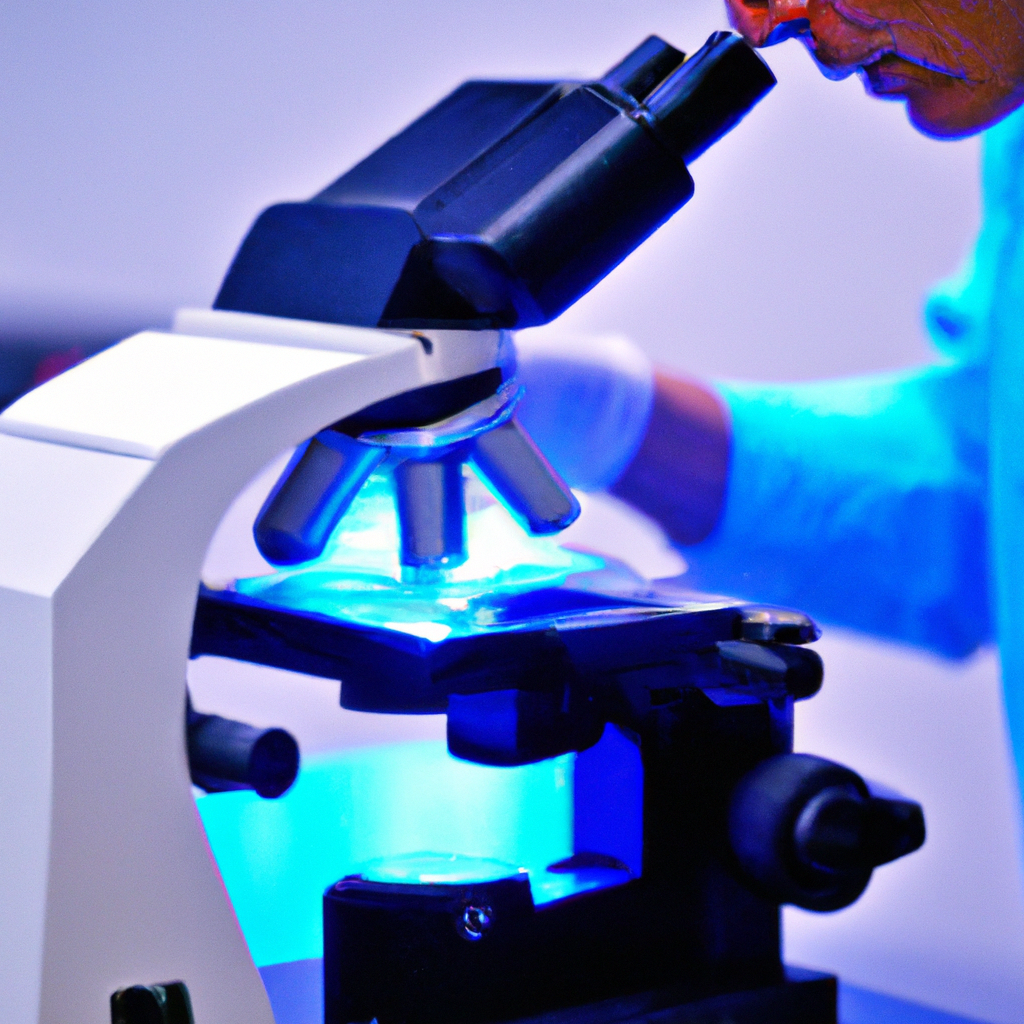Are you curious about the potential of stem cell therapy for treating lung diseases in Malaysia? In this article, we will explore the exciting advancements in stem cell research and their potential applications in lung disease treatments. Join us as we delve into the promising possibilities that stem cell therapy holds for patients in Malaysia, offering hope for improved quality of life and innovative medical interventions. Discover the transformative power of stem cells in combating lung diseases and the potential they hold for revolutionizing healthcare in Malaysia.

Understanding Stem Cell Therapy
Stem cell therapy is a promising medical treatment that involves the use of stem cells to repair or replace damaged cells or tissues in the body. Stem cells are unique cells that have the ability to differentiate into various cell types and can multiply indefinitely. This makes them an attractive option for treating a wide range of diseases and conditions, including lung diseases.
Definition of Stem Cell Therapy
Stem cell therapy, also known as regenerative medicine, is a branch of medical science that focuses on using stem cells to restore or repair damaged tissues and organs in the body. The goal of stem cell therapy is to stimulate the body’s natural healing processes and promote tissue regeneration.
Types of Stem Cells
There are various types of stem cells that can be used in stem cell therapy. These include:
-
Embryonic Stem Cells: These stem cells are derived from embryos and have the ability to differentiate into any cell type in the body. However, the use of embryonic stem cells is controversial due to ethical considerations.
-
Adult Stem Cells: These stem cells are found in various tissues and organs in the body, such as the bone marrow, adipose tissue, and umbilical cord blood. They have a more limited ability to differentiate into specific cell types, but they can still be used for regenerative purposes.
-
Induced Pluripotent Stem Cells (iPSCs): These stem cells are created in the laboratory by reprogramming adult cells, such as skin cells, to revert them back to a pluripotent state. iPSCs have the potential to differentiate into any cell type in the body, similar to embryonic stem cells.
Mechanism of Stem Cell Therapy
The mechanism of stem cell therapy involves the transplantation of stem cells into the affected area of the body. Once transplanted, the stem cells can differentiate into the specific cell types needed to repair or replace damaged cells or tissues. They can also release signaling molecules and growth factors that stimulate the body’s own cells to regenerate and repair themselves.
Stem cell therapy has the potential to benefit patients with lung diseases by promoting the regeneration of lung tissue, reducing inflammation, improving lung function, and enhancing overall respiratory health. It offers a promising alternative to traditional treatment options and holds great potential for improving the quality of life for individuals with lung diseases.
Prevalence of Lung Diseases in Malaysia
Lung diseases are a significant public health concern in Malaysia, with a high prevalence among the population. Understanding the common lung diseases in Malaysia and the statistics associated with them is crucial in addressing the healthcare needs of individuals with these conditions.
Common Lung Diseases in Malaysia
Some of the common lung diseases in Malaysia include:
-
Chronic Obstructive Pulmonary Disease (COPD): COPD is a chronic inflammatory lung disease that causes airflow limitation and breathing difficulties. It is most commonly caused by smoking, but environmental factors can also contribute to its development.
-
Interstitial Lung Disease: Interstitial lung disease refers to a group of respiratory conditions characterized by inflammation and scarring of the lung tissue. It can be caused by various factors, including exposure to certain substances, infections, and autoimmune disorders.
-
Pulmonary Fibrosis: Pulmonary fibrosis is a progressive lung disease that occurs when the lung tissue becomes scarred and thickened, leading to difficulty in breathing. The exact cause of pulmonary fibrosis is often unknown, but it can be linked to certain risk factors, such as smoking and exposure to environmental toxins.
-
Lung Cancer: Lung cancer is one of the leading causes of cancer-related deaths in Malaysia. It occurs when abnormal cells grow and divide uncontrollably in the lung tissue, forming tumors that can spread to other parts of the body.
-
Cystic Fibrosis: Cystic fibrosis is a genetic disorder that affects the lungs and other organs, causing the production of thick, sticky mucus. This mucus can clog the airways and lead to recurring lung infections and respiratory complications.
Statistics on Lung Diseases in Malaysia
According to data from the Malaysian National Cancer Registry (MNCR), lung cancer is the third most common cancer in Malaysia, with an incidence rate of 16.1 per 100,000 population in 2018. It is also the leading cause of cancer-related deaths, accounting for 21.5% of all cancer deaths in the country. The incidence of lung cancer is higher among males than females, with smoking being a major risk factor.
As for other lung diseases, the exact prevalence and incidence rates can vary depending on the specific condition and the population studied. However, it is evident that lung diseases pose a significant burden on the healthcare system in Malaysia and the well-being of its population.

Current Treatment Options for Lung Diseases
When it comes to the treatment of lung diseases, there are several options available, ranging from medication to surgery. The choice of treatment depends on the specific condition, its severity, and the individual patient’s needs.
Medication
Medication is often the first line of treatment for various lung diseases. It aims to manage symptoms, reduce inflammation, control infection, and improve lung function. Common medications used in the treatment of lung diseases include bronchodilators, corticosteroids, antibiotics, and immunosuppressants.
Oxygen Therapy
Oxygen therapy is a treatment option for individuals with lung diseases who have low levels of oxygen in their blood. It involves the administration of supplemental oxygen through a mask or nasal cannula to increase the amount of oxygen available to the lungs and body. Oxygen therapy can improve breathing and reduce symptoms, such as shortness of breath and fatigue.
Pulmonary Rehabilitation
Pulmonary rehabilitation is a comprehensive program that includes exercise training, education, and support for individuals with chronic lung diseases. It aims to improve the overall physical and emotional well-being of patients, enhance their ability to perform daily activities, and reduce symptoms. Pulmonary rehabilitation is often recommended as part of a multidisciplinary approach to lung disease management.
Surgery
In certain cases, surgery may be necessary to treat or manage lung diseases. It can involve the removal of tumors, the resection of damaged lung tissue, lung transplantation, or other procedures to improve lung function. Surgery is typically considered when other treatment options have not been effective or the condition is severe and life-threatening.
It is important to note that while these treatment options can be effective in managing symptoms and improving lung function, they may not provide a cure for many chronic lung diseases. This is where stem cell therapy comes into play as a potential alternative or complementary treatment option for lung diseases.
Introduction to Stem Cell Therapy for Lung Diseases
Stem cell therapy offers a novel approach to treating lung diseases by harnessing the regenerative potential of stem cells. It holds great promise for improving outcomes and quality of life for individuals with lung diseases that have limited treatment options.
Overview of Stem Cell Therapy for Lung Diseases
Stem cell therapy for lung diseases involves the use of stem cells to repair or regenerate damaged lung tissue. The stem cells can be derived from various sources, such as the patient’s own body (autologous stem cells), umbilical cord blood, or other compatible donors (allogeneic stem cells).
the transplantation of stem cells into the lungs can promote tissue regeneration, reduce inflammation, stimulate the growth of new blood vessels, and enhance lung function. It is believed that the stem cells can differentiate into lung-specific cells, such as alveolar cells, epithelial cells, and endothelial cells, to restore the structural and functional integrity of the lungs.
Benefits of Stem Cell Therapy
Stem cell therapy offers several potential benefits for individuals with lung diseases, including:
-
Improved Lung Function: By promoting tissue regeneration and reducing inflammation, stem cell therapy has the potential to improve lung function and respiratory health. This can lead to a reduction in symptoms, such as shortness of breath, coughing, and wheezing.
-
Reduced Scarring and Fibrosis: Stem cells have the ability to modulate the immune response and promote the regeneration of healthy tissues. This can help reduce scarring and fibrosis in the lungs, which are common features of many lung diseases.
-
Enhanced Quality of Life: By improving lung function and reducing symptoms, stem cell therapy can significantly enhance the quality of life for individuals with lung diseases. It can allow them to engage in daily activities more easily, reduce the need for supplemental oxygen, and improve overall well-being.
-
Potential for Disease Modification: Stem cell therapy has the potential to modify the course of the disease by targeting the underlying mechanisms and promoting tissue repair. This could potentially slow down disease progression and prevent further damage to the lungs.
While stem cell therapy offers promising benefits, it is important to note that further research and clinical trials are needed to establish its long-term efficacy, safety, and optimal protocols for different lung diseases.

Stem Cell Research and Development in Malaysia
Malaysia has made significant progress in stem cell research and development, with a focus on using stem cells for various medical applications, including the treatment of lung diseases. The government has played a key role in supporting and promoting stem cell research through initiatives and funding, while research institutions and centers have been actively involved in advancing the field.
Government Initiatives and Funding
The Malaysian government has recognized the potential of stem cell therapy and regenerative medicine in improving healthcare and addressing the needs of the population. Various initiatives and funding programs have been established to support stem cell research and development in the country.
The Ministry of Science, Technology, and Innovation (MOSTI) has been instrumental in promoting stem cell research through its National Biotechnology Policy and National Stem Cell Policy. These policies provide a framework for the ethical conduct of stem cell research, ensure patient safety, and encourage collaboration between academia, industry, and healthcare providers.
Furthermore, the Malaysian Stem Cell Registry (MSCR) was established to regulate the collection, processing, and storage of stem cells for clinical use. The MSCR aims to ensure the quality and safety of stem cell therapies in Malaysia and protect the rights of patients.
In terms of funding, several government agencies, such as the Ministry of Higher Education and the Ministry of Health, provide grants and funding opportunities to support stem cell research projects. The Malaysia Innovation Agency (AIM) also offers funding and assistance to innovative projects in the field of regenerative medicine.
Research Institutions and Centers
Malaysia is home to several research institutions and centers that are actively involved in stem cell research and development. These institutions collaborate with local and international partners to advance scientific knowledge, conduct clinical trials, and develop innovative stem cell therapies for various diseases, including lung diseases.
Some of the notable research institutions and centers in Malaysia that focus on stem cell research include:
-
Institute for Medical Research (IMR): The IMR is a leading research institute in Malaysia that conducts biomedical and health-related research. It has been involved in stem cell research, including the development of stem cell-based therapies for lung diseases.
-
University of Malaya Centre for Stem Cell Research (UMCSCR): UMCSCR is a dedicated research center that focuses on stem cell research and regenerative medicine. It collaborates with local and international partners to conduct cutting-edge research and clinical trials.
-
Malaysian Institute of Pharmaceuticals and Nutraceuticals (IPharm): IPharm is a research institute that specializes in pharmaceutical and nutraceutical research. It has been involved in stem cell research, particularly in the development of stem cell-based therapies for lung diseases and other respiratory conditions.
These research institutions and centers contribute to the overall advancement of stem cell therapy in Malaysia and play a crucial role in translating scientific discoveries into clinical applications for the benefit of patients.
Types of Lung Diseases Treated with Stem Cell Therapy
Stem cell therapy has shown promise for the treatment of various lung diseases, offering potential benefits for patients who have limited treatment options. Some of the lung diseases that can potentially be treated with stem cell therapy include:
Chronic Obstructive Pulmonary Disease (COPD)
COPD is a progressive lung disease that causes airflow limitation and breathing difficulties. It is commonly caused by long-term exposure to irritants, such as cigarette smoke, and is characterized by chronic inflammation and damage to the airways and alveoli.
Stem cell therapy for COPD aims to regenerate damaged lung tissue, reduce inflammation, and improve lung function. The transplantation of stem cells can promote the regeneration of alveolar cells and bronchial epithelial cells, leading to the restoration of normal lung structure and function.
Interstitial Lung Disease
Interstitial lung disease refers to a group of respiratory conditions characterized by inflammation and scarring of the lung tissue. It can be caused by various factors, such as exposure to certain substances, infections, and autoimmune disorders.
Stem cell therapy for interstitial lung disease focuses on reducing inflammation, preventing further scarring, and promoting the regeneration of healthy lung tissue. The transplantation of stem cells can stimulate the growth of new blood vessels and the production of lung-specific cells, leading to the repair and restoration of normal lung function.
Pulmonary Fibrosis
Pulmonary fibrosis is a progressive lung disease that occurs when the lung tissue becomes scarred and thickened, leading to difficulty in breathing. The exact cause of pulmonary fibrosis is often unknown, but it can be linked to certain risk factors, such as smoking and exposure to environmental toxins.
Stem cell therapy for pulmonary fibrosis aims to reduce scarring and fibrosis in the lungs, improve lung function, and enhance overall respiratory health. The transplantation of stem cells can promote tissue regeneration, modulate the immune response, and stimulate the production of lung-specific cells, leading to the restoration of normal lung structure and function.
Lung Cancer
Lung cancer is one of the leading causes of cancer-related deaths worldwide, including Malaysia. It occurs when abnormal cells grow and divide uncontrollably in the lung tissue, forming tumors that can spread to other parts of the body.
Stem cell therapy for lung cancer focuses on killing cancer cells, reducing tumor growth, and promoting the regeneration of healthy lung tissue. The transplantation of targeted stem cells can deliver anti-cancer agents directly to the tumor site, while also promoting tissue repair and regeneration.
Cystic Fibrosis
Cystic fibrosis is a genetic disorder that affects the lungs and other organs, causing the production of thick, sticky mucus. This mucus can clog the airways and lead to recurring lung infections and respiratory complications.
Stem cell therapy for cystic fibrosis aims to alleviate symptoms, reduce lung inflammation, and improve lung function. The transplantation of stem cells can promote the production of healthy lung cells, reduce mucus production, and enhance the clearance of mucus from the airways.
It is important to note that while stem cell therapy holds promise for the treatment of these lung diseases, further research and clinical trials are needed to establish its safety and efficacy, as well as standardized protocols for different conditions.

Efficacy and Safety of Stem Cell Therapy for Lung Diseases
The efficacy and safety of stem cell therapy for lung diseases have been the subject of extensive research and clinical trials. While the results are promising, it is important to cautiously interpret the findings and consider the challenges and limitations associated with this innovative treatment approach.
Clinical Trials and Studies
Numerous clinical trials and studies have been conducted to evaluate the efficacy and safety of stem cell therapy for lung diseases. These trials have shown promising results, with improvements in lung function, quality of life, and symptom relief observed in some patients.
For example, a clinical trial conducted at a reputable research institution in Malaysia evaluated the effects of autologous stem cell transplantation in individuals with COPD. The study participants showed significant improvements in lung function, exercise capacity, and quality of life after the transplantation of their own bone marrow-derived stem cells.
Similarly, studies have shown the potential benefits of stem cell therapy in patients with pulmonary fibrosis, interstitial lung disease, lung cancer, and cystic fibrosis. These studies reported improvements in lung function, reduction in fibrosis and scarring, and enhanced overall respiratory health in some patients.
However, it is important to note that these studies have limitations, such as small sample sizes, varied treatment protocols, and limited long-term follow-up. Further research and larger clinical trials are needed to establish the optimal protocols, long-term efficacy, and safety profile of stem cell therapy for lung diseases.
Success Stories and Patient Testimonials
In addition to clinical trials and studies, there have been numerous success stories and patient testimonials that highlight the potential benefits of stem cell therapy for lung diseases. These stories often involve individuals who have experienced significant improvements in their lung function, symptom relief, and overall quality of life after undergoing stem cell therapy.
While these success stories are encouraging, it is important to approach them with caution and consider individual variations in treatment response. The outcome of stem cell therapy can vary from patient to patient, depending on factors such as the specific lung disease, disease severity, patient characteristics, and treatment protocols.
Challenges and Limitations
Despite the promising results and potential benefits, stem cell therapy for lung diseases still faces several challenges and limitations. These include:
-
Standardization of Treatment Protocols: The optimal protocols for stem cell therapy, including the type and source of stem cells, the dosing, and the route of administration, have not been fully established. Standardized protocols are needed to ensure consistent efficacy and safety across different patient populations.
-
Long-Term Efficacy and Safety: Long-term studies and follow-up are needed to assess the sustainability of the improvements observed after stem cell therapy. Additionally, long-term safety data are essential to determine potential risks and side effects associated with the treatment.
-
Ethical Considerations: The use of embryonic stem cells in research and therapy raises ethical concerns due to the destruction of embryos. It is essential to explore alternative sources of stem cells, such as adult stem cells and induced pluripotent stem cells, to overcome these ethical challenges.
-
Regulatory Approval and Accessibility: Stem cell therapy is still considered an experimental treatment in many countries, including Malaysia. Regulatory approval and guidelines are needed to ensure the safety and efficacy of stem cell therapies and improve accessibility for patients in need.
-
Cost and Affordability: Stem cell therapy can be costly, making it inaccessible to many patients. Efforts should be made to explore cost-effective approaches, increase affordability, and ensure equitable access to stem cell therapies.
Addressing these challenges and limitations will be crucial for the wider acceptance and adoption of stem cell therapy as a standard treatment option for lung diseases.
Procedure and Techniques of Stem Cell Therapy for Lung Diseases
The procedure and techniques used in stem cell therapy for lung diseases can vary depending on the specific condition, the patient’s needs, and the treatment protocol established by the healthcare provider. However, there are common steps involved in the preparation and administration of stem cell therapy.
Collection of Stem Cells
Stem cells can be collected from various sources, including:
-
Bone Marrow: Stem cells can be harvested from the patient’s own bone marrow. This procedure involves the insertion of a needle into the bone marrow cavity, typically in the hip or sternum, to obtain a sample of bone marrow containing stem cells.
-
Adipose Tissue: Adipose-derived stem cells can be collected from the patient’s own fat tissue through a minimally invasive procedure called liposuction. Small amounts of fat tissue are removed using a syringe, and the stem cells are isolated from the fat cells.
-
Umbilical Cord Blood: Stem cells can also be obtained from umbilical cord blood collected at the time of birth. Cord blood banking allows for the preservation of umbilical cord blood stem cells for potential future use in the treatment of diseases.
Preparation of Stem Cells
Once collected, the stem cells need to be prepared for transplantation. This involves processing and isolating the stem cells from other cells and substances present in the collected sample. Different techniques, such as centrifugation and specialized cell culture methods, may be used to purify and concentrate the stem cells.
The prepared stem cells are then characterized to determine their viability, purity, and other important characteristics. Quality control measures ensure that the stem cells meet the required standards for transplantation and are free from contamination or other potential risks.
Administration of Stem Cells
The administration of stem cells into the lungs can be achieved through various routes, including:
-
Intravenous (IV) Injection: Stem cells can be administered intravenously, which involves injecting the cells directly into a vein. This allows the stem cells to circulate in the bloodstream and reach the lungs, where they can exert their regenerative effects.
-
Inhalation: In some cases, stem cells can be delivered to the lungs through inhalation. Inhalation therapy involves the use of nebulizers or other devices to convert stem cells into a fine mist or aerosol, which can be inhaled into the lungs.
-
Bronchoscopy: Bronchoscopy is a procedure that allows direct visualization of the airways using a flexible tube called a bronchoscope. Stem cells can be administered through the bronchoscope, enabling precise targeting and delivery to specific areas of the lungs.
The choice of administration route depends on several factors, including the type of stem cells used, the desired therapeutic effect, and the patient’s condition.
It is important to note that stem cell therapy for lung diseases is a complex medical procedure that should be performed by qualified healthcare professionals in specialized medical facilities. Patients considering stem cell therapy should consult with their healthcare providers to understand the potential risks, benefits, and appropriate treatment options for their specific condition.

Regulation and Ethics of Stem Cell Therapy in Malaysia
Stem cell therapy in Malaysia is subject to regulatory oversight and ethical considerations to ensure patient safety and the responsible use of stem cells. The government has implemented laws and regulations to guide the practice of stem cell therapy and protect the welfare of patients.
Laws and Regulations
The use of stem cells and stem cell therapies in Malaysia is regulated by several laws and regulations, including:
-
National Stem Cell Policy: The National Stem Cell Policy, established by the Ministry of Science, Technology, and Innovation (MOSTI), provides a framework for the ethical conduct of stem cell research and therapy in Malaysia. It outlines the guidelines for the collection, processing, storage, and clinical use of stem cells.
-
Malaysian Code of Stem Cell Research and Therapy: The Malaysian Code of Stem Cell Research and Therapy, developed by the National Guidelines Scientific Committee on Stem Cell Research and Therapy, provides specific guidelines and standards for the practice of stem cell research and therapy in Malaysia. It covers aspects such as informed consent, storage and handling of stem cells, and regulatory compliance.
-
Cell and Tissue-Based Products Regulations: The Cell and Tissue-Based Products Regulations, overseen by the National Pharmaceutical Regulatory Agency (NPRA), regulate the quality, safety, and effectiveness of cell and tissue-based products, including stem cell therapies, in Malaysia. The regulations cover aspects such as product registration, manufacturing, labeling, and adverse event reporting.
These laws and regulations aim to ensure the responsible and ethical use of stem cells, protect patient rights, and maintain quality standards in stem cell research and therapy.
Ethical Considerations
Ethical considerations play a significant role in stem cell therapy for lung diseases. The use of embryonic stem cells, for example, raises ethical concerns due to the destruction of embryos. To overcome these ethical challenges, researchers have focused on alternative sources of stem cells, such as adult stem cells and induced pluripotent stem cells, which do not involve the use of embryos.
In addition, informed consent is a crucial ethical consideration in stem cell therapy. Patients must be provided with comprehensive information about the procedure, potential risks and benefits, and alternative treatment options. They should have the autonomy to make informed decisions regarding their participation in stem cell therapy and have access to counseling and support throughout the treatment process.
Ethical review boards and committees, operating within research institutions and healthcare facilities, play an important role in ensuring that stem cell research and therapy adhere to ethical guidelines and standards. These bodies review research proposals, assess the scientific and ethical aspects of studies, and ensure that the rights and welfare of participants are protected.
The ethical considerations surrounding stem cell therapy reflect the importance of responsible research and practice, as well as the need to balance scientific advancements with societal values and patient well-being.
Future Directions and Possibilities
The field of stem cell therapy for lung diseases is rapidly evolving, with ongoing advancements, research, and exploration of new possibilities. The future holds several exciting prospects for the application of stem cell therapy in the treatment of lung diseases in Malaysia.
Advancements in Stem Cell Research
Advancements in stem cell research are expected to contribute to a deeper understanding of the mechanisms and potential therapeutic applications of stem cells for lung diseases. Researchers are actively exploring novel sources of stem cells, refining protocols for their isolation and expansion, and investigating the precise mechanisms by which stem cells promote tissue repair and regeneration.
In addition, advancements in gene editing technologies, such as CRISPR-Cas9, hold promise for enhancing the efficacy and safety of stem cell therapy. The ability to precisely modify stem cells and correct genetic defects opens up new opportunities for personalized medicine and targeted therapies.
Combination Therapies
Combination therapies, which involve the use of stem cell therapy in conjunction with other treatment modalities, are being explored as potential strategies for optimizing treatment outcomes. For example, stem cell therapy may be combined with medication, pulmonary rehabilitation, or other regenerative approaches to enhance the regenerative capacity and therapeutic effects.
Furthermore, the integration of stem cell therapy with advanced imaging techniques, such as positron emission tomography (PET) and magnetic resonance imaging (MRI), can provide valuable insights into the distribution, migration, and engraftment of stem cells in the lungs. This knowledge can guide treatment planning, monitoring, and optimization of stem cell therapies.
Personalized Medicine
Personalized medicine, also known as precision medicine, is an emerging approach that aims to tailor medical treatments to individual patients based on their unique characteristics, including genetics, lifestyle, and environment. In the context of stem cell therapy for lung diseases, personalized medicine can help identify the most suitable type and source of stem cells for each patient, optimize treatment protocols, and predict treatment response.
Advancements in genetic testing and profiling technologies allow for the identification of genetic markers and biomarkers that can guide treatment selection and prognosis. This personalized approach can improve treatment outcomes, reduce unnecessary interventions, and enhance patient satisfaction.
The future of stem cell therapy for lung diseases in Malaysia is promising, with ongoing research, advancements in technology, and a growing understanding of the regenerative potential of stem cells. While challenges and limitations remain, continued efforts to refine protocols, establish evidence-based guidelines, and address regulatory and ethical considerations will pave the way for the wider adoption and integration of stem cell therapy into mainstream healthcare practice.
In conclusion, stem cell therapy holds great potential for the treatment of lung diseases in Malaysia. With the prevalence of lung diseases in the country and the advancements in stem cell research and development, there is an opportunity to revolutionize lung disease management and improve patient outcomes. However, further research, clinical trials, and regulatory measures are needed to establish the long-term efficacy, safety, and accessibility of stem cell therapy. With continued advancements and collaboration between researchers, healthcare providers, and regulatory bodies, the potential of stem cell therapy for lung diseases in Malaysia can be fully realized.




